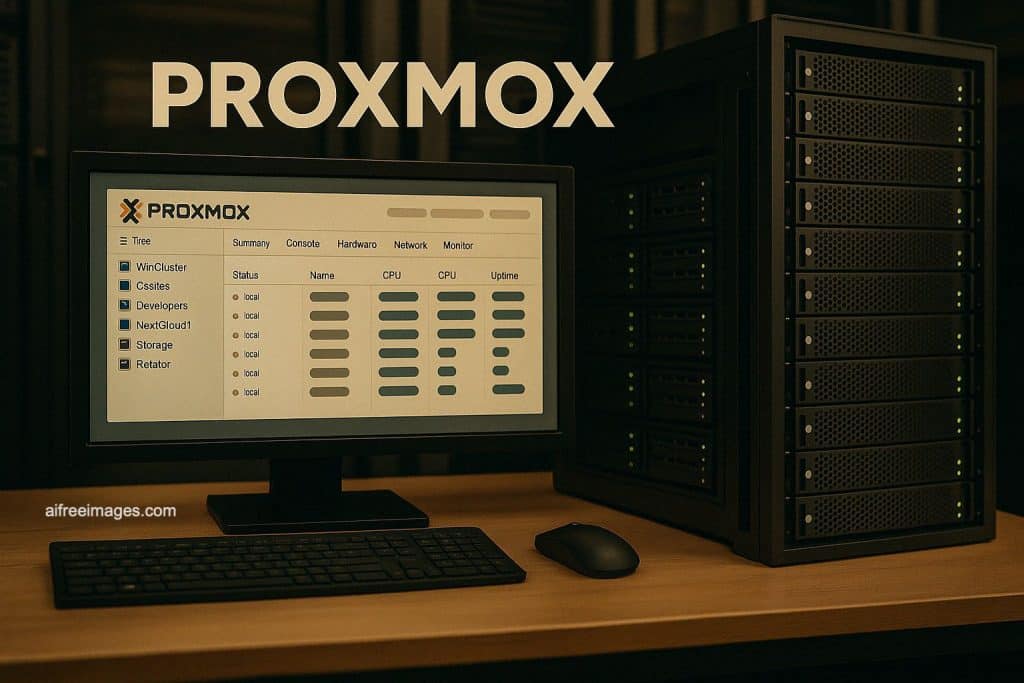Proxmox celebrates its 20th anniversary by reinforcing its open-source suite with a major update focused on cloud scalability, advanced automation, and operational flexibility for hybrid and enterprise environments.
Austrian open-source leader Proxmox Server Solutions GmbH has officially released Proxmox Backup Server 4.0, a key upgrade that brings significant enhancements to its enterprise-grade backup platform. Coinciding with the recent launch of Proxmox VE 9.0, this release marks a new phase in the evolution of the Proxmox ecosystem—now more cloud-ready, secure, and automation-friendly than ever before.
Built on Debian 13 “Trixie” and Linux kernel 6.14, the new version introduces native support for S3-compatible object storage, dynamic RAIDZ expansion with ZFS 2.3.3, and automated sync jobs for removable datastores, among other features designed to simplify operations and reduce infrastructure costs.
Modernized Core on Debian 13 “Trixie” with Linux 6.14
Proxmox Backup Server 4.0 adopts Debian 13 “Trixie” as its new foundation, providing long-term stability, enhanced security, and better support for modern hardware platforms. With Linux 6.14 as the default kernel, users benefit from improved I/O throughput, enhanced NVMe compatibility, energy efficiency, and up-to-date system libraries.
This ensures the platform is well-suited for modern data centers, private cloud setups, and edge deployments requiring maximum reliability and performance.
Native S3-Compatible Object Storage Integration
A key highlight in this release is the native integration of S3-compatible object storage as a backend for backups. This allows seamless and efficient use of both public (e.g., Amazon S3, Wasabi, Backblaze) and private cloud object stores.
Notable technical features include:
- Smart local caching to reduce API calls and minimize costs.
- High availability and disaster recovery, even if the original backup server instance becomes unavailable.
- One datastore per PBS instance, but the object store remains fully reusable and portable.
This capability is particularly attractive for organizations implementing multi-cloud, hybrid cloud, or offsite backup strategies, giving them full control over their data without vendor lock-in.
Live RAIDZ Expansion with ZFS 2.3.3
Proxmox Backup Server 4.0 introduces support for live RAIDZ pool expansion thanks to the updated ZFS 2.3.3.
For the first time, administrators can add new drives to an existing RAIDZ vdev without service interruption, enabling:
- On-demand scalability without initial overprovisioning.
- Lower infrastructure costs over time.
- Continuous data availability and reduced migration complexity.
This feature provides a substantial operational benefit over traditional storage architectures that require downtime or pool re-creation to expand capacity.
Automated Sync for Removable Datastores
The new run-on-mount option allows administrators to automatically trigger sync jobs whenever a removable datastore (e.g., USB, SATA drive) is mounted.
This significantly simplifies backup workflows for rotating media setups or air-gapped environments, which are common in critical sectors like defense, government, or industrial OT systems with strict security and offline requirements.
Seamless Integration with Proxmox VE 9.0
Proxmox Backup Server 4.0 is designed to integrate natively with Proxmox Virtual Environment (PVE), which also just released its major version 9.0, based on Debian 13 and with support for ZFS 2.3.3.
Admins can quickly configure backup targets, run deduplicated, compressed, encrypted backups, and restore full VMs, containers, or individual files via the web-based GUI.
This synergy between PBS and PVE allows IT teams to consolidate virtualization and backup operations under a cohesive, open-source infrastructure stack.
Licensing Model and Enterprise Support
As with previous versions, Proxmox Backup Server 4.0 is released under the GNU AGPLv3 license, offering unrestricted use for commercial or personal deployments.
For enterprise environments that require enhanced reliability and SLAs, Proxmox provides commercial subscriptions starting at €540 per server, which include:
- Access to the Enterprise Repository with stable and tested updates.
- Technical support and long-term maintenance.
- Unlimited backup storage and clients.
A Strategic Open-Source Alternative to Veeam, Commvault, and Acronis
With its latest release, Proxmox strengthens its position as a powerful, cost-effective, and fully open-source alternative to traditional enterprise backup vendors.
The platform supports:
- Incremental backups and deduplication for storage efficiency.
- Zstandard compression for performance.
- Authenticated encryption to maintain data integrity and security.
- Web-based management for intuitive and centralized control.
For CTOs and system architects, this means reduced TCO, simplified operations, and full control over infrastructure without dependency on closed ecosystems.
Technical Resources
- 🔗 ISO Download: https://www.proxmox.com/downloads
- 📘 Migration Guide & Docs: https://forum.proxmox.com
- 📅 Release Notes & Roadmap: https://proxmox.com/en/roadmap
Frequently Asked Questions (FAQ)
Can I use Proxmox Backup Server 4.0 to back up to AWS S3 or Wasabi?
Yes. PBS 4.0 supports any S3-compatible backend, including AWS S3, Wasabi, Backblaze, MinIO, or self-hosted object stores.
What’s the benefit of live RAIDZ expansion in ZFS 2.3.3?
It allows you to expand existing RAIDZ pools by adding new drives without downtime or data migration, reducing provisioning costs and improving flexibility.
Is Proxmox Backup Server free for business use?
Yes. It is fully open-source under AGPLv3. Enterprise users may optionally purchase support subscriptions for added reliability and professional assistance.
How does Proxmox Backup Server integrate with Proxmox VE 9.0?
It integrates natively. You can configure PBS as a backup target in Proxmox VE, schedule backups, and manage them directly via the web UI with full deduplication and encryption support.

